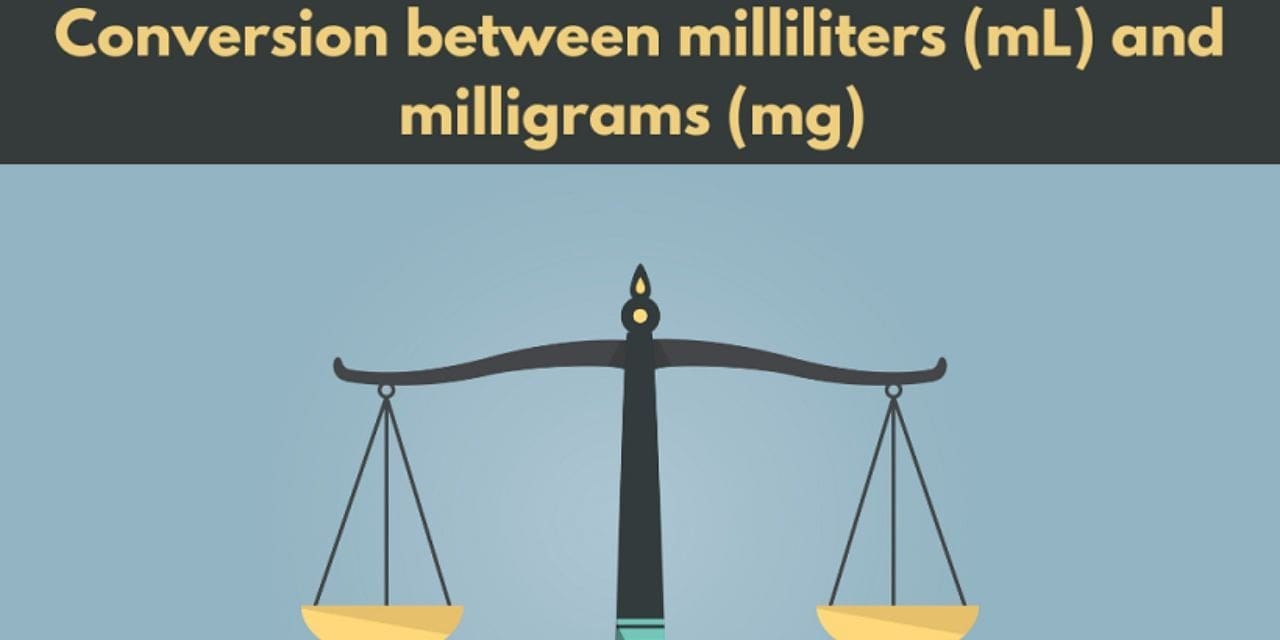In industries ranging from pharmaceuticals to manufacturing, precise measurements are the backbone of efficient operations. One common conversion crucial in these sectors is from milligrams (mg) to milliliters (mL). Whether it’s dosing medications, mixing chemicals, or determining liquid volumes for production, accurate conversions are essential. In this article, we’ll explore how industries can simplify processes and enhance accuracy by mastering milligrams to milliliters conversions.
Understanding the Need for Conversion:
In industrial settings, materials are often measured in different units depending on their form and application. While some substances are measured by weight in milligrams (mg), others, such as liquids, are measured by volume in milliliters (mL). Converting between these units allows for seamless integration and consistency across various stages of production and quality control.
Conversion Methods and Tools:
Several methods and tools are available to facilitate milligrams to milliliters conversions in industrial settings:
Density Calculation: For liquids and solutions with known densities, the conversion can be achieved by dividing the mass in milligrams by the density in milligrams per milliliter (mg/mL). This method ensures accurate conversions tailored to the specific substance being measured.
Conversion Tables: Pre-calculated conversion tables or charts provide quick reference guides for converting between milligrams and milliliters for commonly used substances. These tables are particularly useful in situations where precise density information is not readily available.
Digital Conversion Tools: Online converters and software applications offer convenient solutions for performing milligrams to milliliters & milliliters to grams conversions with precision. These tools allow users to input the mass in milligrams and obtain the corresponding volume in milliliters instantly, streamlining workflow and minimizing errors.
Practical Applications:
Milligrams to milliliters conversions find applications across various industries:
Pharmaceuticals: In pharmaceutical manufacturing, accurate conversions are essential for dosing medications and preparing formulations. Converting active ingredients from milligrams to milliliters ensures precise dosage delivery and adherence to regulatory standards.
Chemical Engineering: Chemical processes often require precise measurements of reagents and solvents. Converting between milligrams and milliliters enables accurate mixing and blending of chemicals, ensuring consistent product quality and performance.
Food and Beverage: In the food and beverage industry, recipes are often expressed in both weight (milligrams) and volume (milliliters) measurements. Converting ingredients between these units allows for efficient recipe scaling and production planning.
Best Practices for Accuracy:
To ensure accurate milligrams to milliliters conversions in industrial settings, consider the following best practices:
Verify Density: When converting substances with variable densities, ensure accurate density measurements through calibrated instruments or laboratory analysis.
Use Standardized Units: Adopt standardized units of measurement and conversion factors to maintain consistency and compatibility across operations.
Double-Check Calculations: Verify conversion calculations and results to mitigate errors and ensure accuracy in measurement and production processes.
Conclusion:
Mastering milligrams to milliliters conversions is essential for optimizing efficiency and accuracy in industrial operations. Whether it’s pharmaceutical manufacturing, chemical processing, or food production, accurate measurements are the foundation of successful outcomes. By leveraging appropriate conversion methods and tools, industries can streamline processes, enhance quality control, and drive innovation in their respective fields. Embracing precision in milligrams to milliliters conversions is not just a practice—it’s a cornerstone of excellence in industrial operations.

